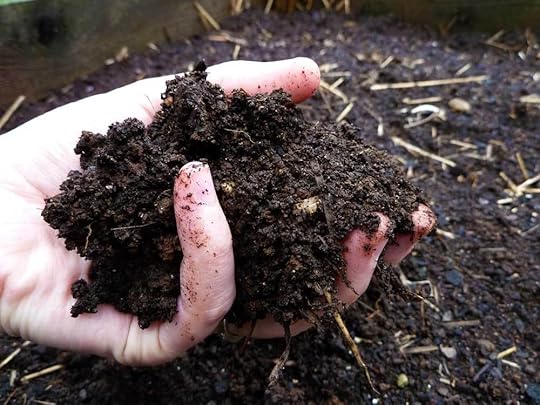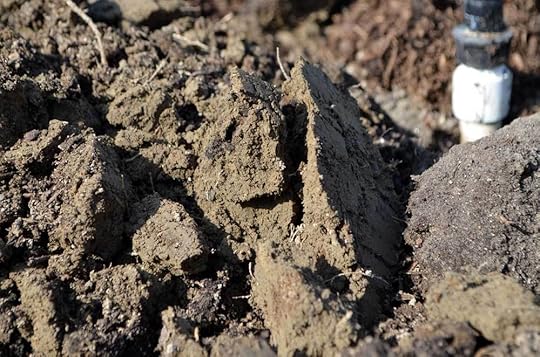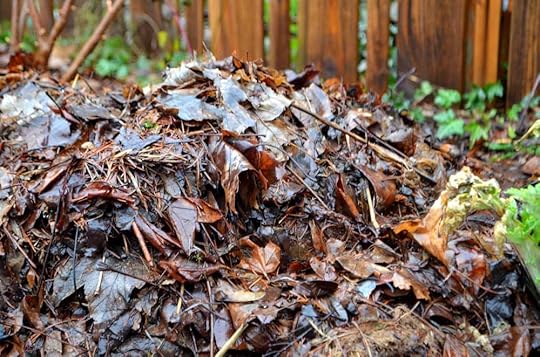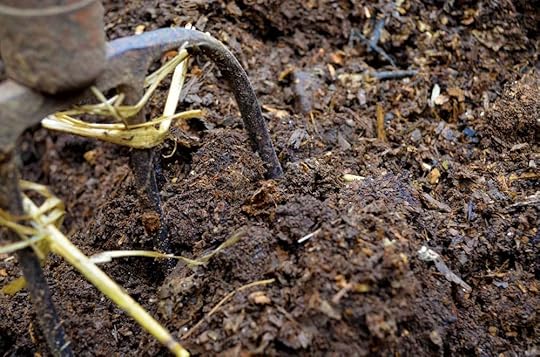Building Soil Quality with Leaves
Most of us are constantly working on increasing the soil quality of our gardens – both the soil nutrients and the soil structure. Either we’re starting a new garden on less-than-ideal soil or we’re trying to build the soil quality back up after previous crops sapped nutrients from the ground or winter rains compacted the soil. In this post, I will discuss how to enhance the soil structure of your garden with dry leaves. Increasing soil nutrients will come in a later post.
The rich humus garden loam we’re all after! Spongey, light, fluffy and packed full of nutrients
Soil structure refers to the actual solid parts of your soil and the open areas in between. We have hardpan, heavy, dense soil and that’s bad news for plants. Here are a few reasons why that makes it difficult for plant life:
Limited air pockets prevent storage of oxygen and water (both needed for plants to thrive)
Limited space for micro organisms, worms and other microbes to live
Difficult for plant roots to dig down and get established.
Heavy, clay hardpan soil
I use the dormant season as a time to add lasagna layers to the garden to help build our soil quality. Tilling would expose weed seeds, destroy what little soil life exists and is difficult to avoid disturbing existing plants. And it’s otherwise pretty quiet in the garden, giving me enough time to tackle big soil issues.
This year, we collected a couple truck loads of dried leaves to use as “leaf mulch” throughout the garden. We spread them about 6-8″ thick, but pulled the leaves back from the base of trees to maintain good air circulation around the trunks. It seems like a thick, fluffy layer once we were done, but by late spring they will have decomposed down to just a couple inches.
Thick layer of freshly spread leaf mulch
The dried leaves have very little nutrients left in them, but they decompose quickly which will help increase the structure of our soil over time. They will invite earth worms up to eat the leaves and leave behind nutrient-rich worm castings. Leaf mulch is also excellent for increasing water retention. Once decomposed, it leaves lots of air pockets throughout the garden. The perfect place to store water, oxygen and house microbes.
We have a few more homestead chores to tackle before spring planting to help build our soil quality: harvesting compost, turning not-yet-ready-compost, and topping off our plant beds with fresh wood chips for water retention and weed suppression.
Finished compost ready to spread in our garden before spring planting
I have to admit I feel behind on everything, which sounds silly since it’s only January. This is still a newer homestead and there is a lot of work we need to devote to cultivating this new space. The kiddos are keeping me busy, but I’m optimistic I can still find a few hours this winter to get digging.
I would love to hear how you are managing, or not managing, it all this winter on your homestead! Am I the only one who feels a little behind already?







